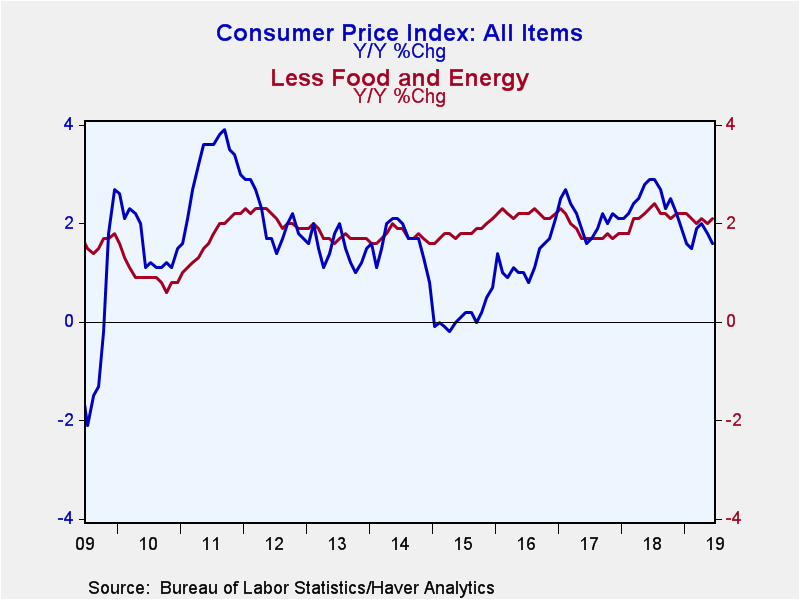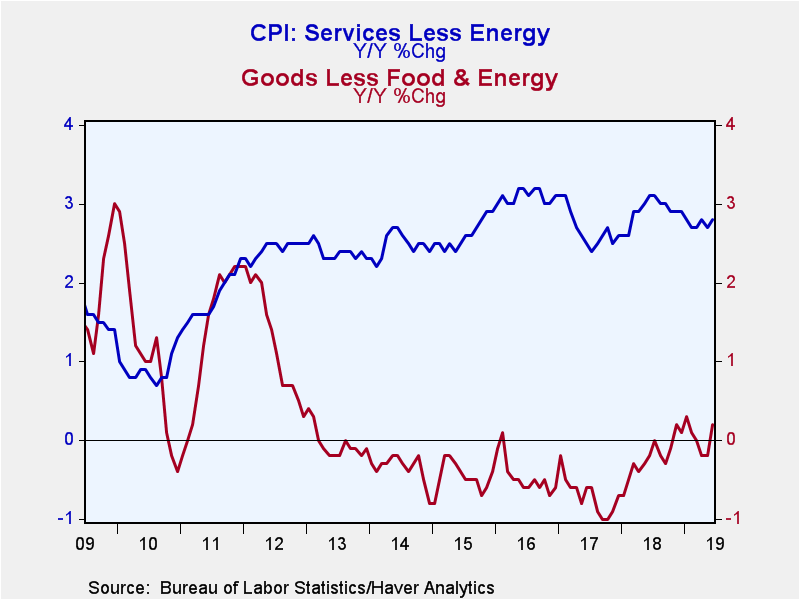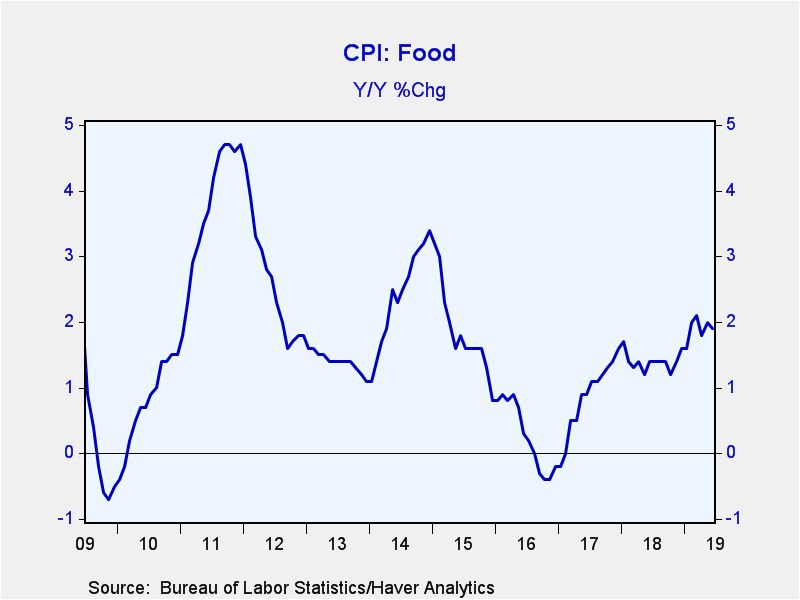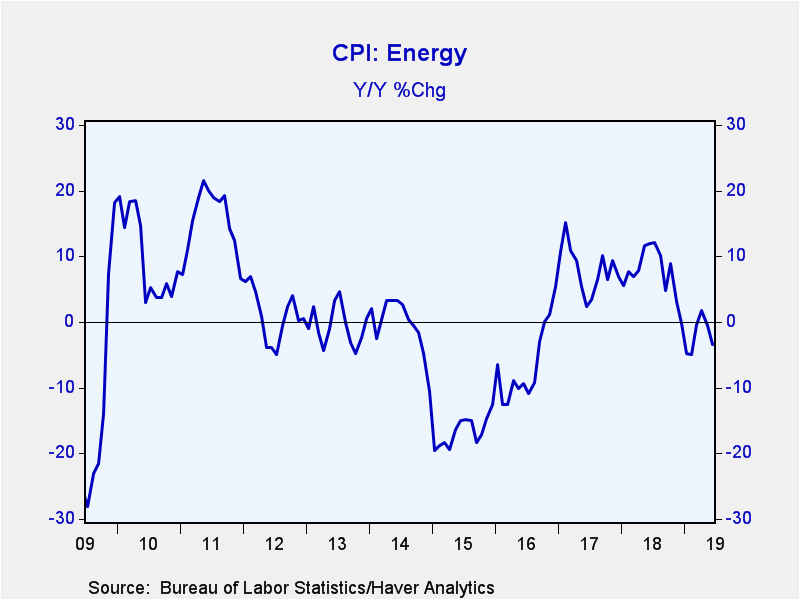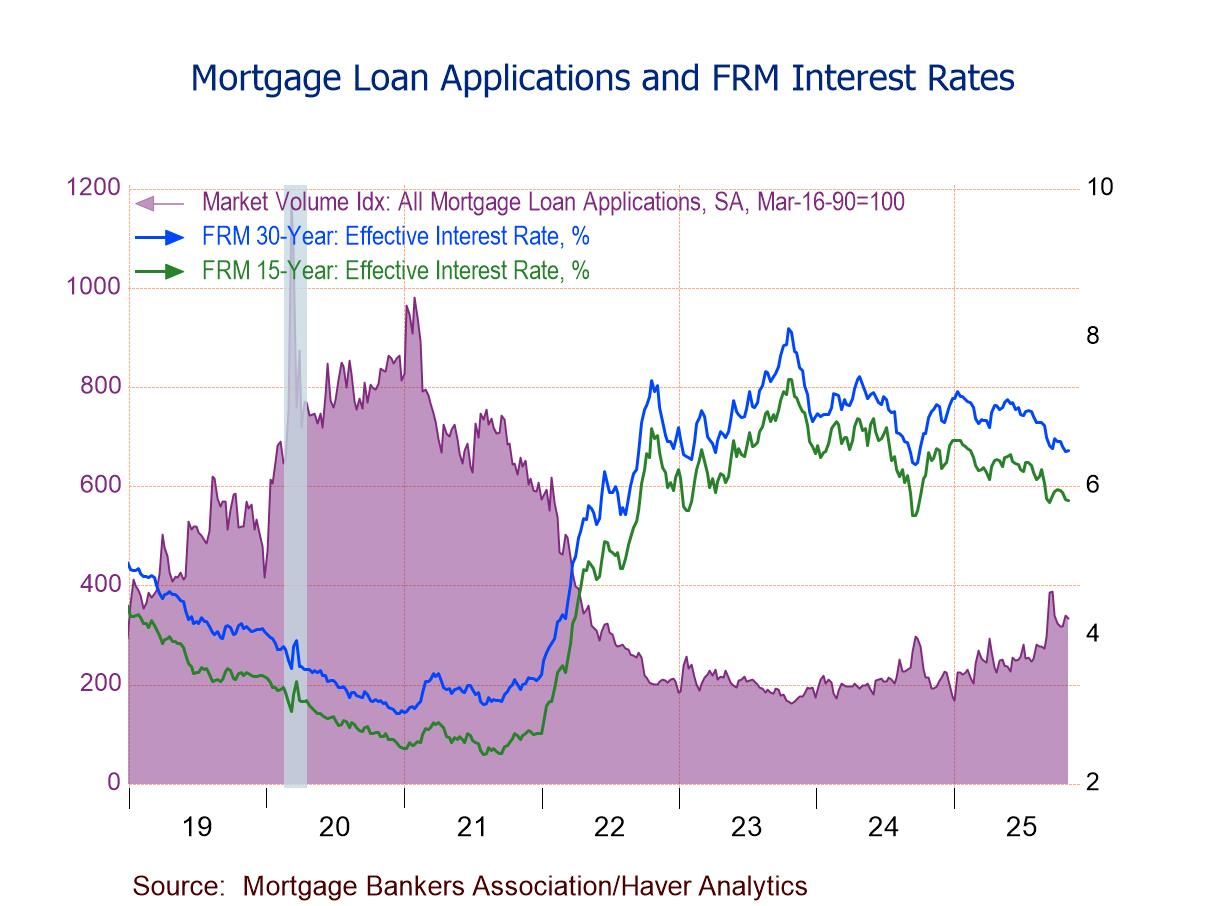 Global| Jul 11 2019
Global| Jul 11 2019U.S. CPI Increases Minimally; Core Price Index Strengthens
by:Tom Moeller
|in:Economy in Brief
Summary
Overall retail pricing power remained muted last month, but strength emerged in core prices. The Consumer Price Index edged 0.1% higher (1.6% y/y) during June, the same as it did in May. These remained the smallest increases since [...]
Overall retail pricing power remained muted last month, but strength emerged in core prices. The Consumer Price Index edged 0.1% higher (1.6% y/y) during June, the same as it did in May. These remained the smallest increases since January. The rise compared to zero change expected in the Action Economics Forecast Survey. Strengthening, however, was the increase in the CPI excluding food & energy. It rose 0.3% (2.1% y/y), the largest gain since January 2018. It followed four consecutive months of 0.1% gains. A 0.2% rise had been expected.
Core goods prices increased 0.4% (0.2% y/y) after four straight months of decline. The rise was led by a 1.1% gain (-1.3% y/y) in apparel prices after they had held steady for three straight months. Furniture & bedding costs strengthened by 0.9% after a 0.7% rise. The 3.1% y/y increase contrasted with y/y price deflation as of August of last year. Appliance prices increased 0.4% (2.6% y/y) after two months of even stronger gains. Sporting goods prices rose 0.3% (0.7% y/y) which followed a 0.1% uptick. New vehicle prices rose a minimal 0.1% (0.6% y/y) for the third straight month. Strength was logged, however, by used car & truck prices which bounced back 1.6% (1.2% y/y) after falling in five of the prior six months. Price declines in several other sectors offset these increases. Education & communication goods prices fell 0.8% (-6.1% y/y) reflecting a 1.2% decline (-7.3% y/y) in prices of information technology products. Medical care goods prices fell 0.2% (-1.5% y/y) after a 0.4% decline. Recreation goods prices eased 0.1%, although they rose a firm 3.6% y/y.
Service prices rose 0.3% in June (2.8% y/y) after a 0.2% gain. Medical care services prices strengthened 0.4% (2.8% y/y) after a 0.5% rise. Shelter costs rose 0.3% (3.5% y/y) after improving 0.2%. Rents of primary residences strengthened 0.4% (3.9% y/y) and the owners' equivalent rent of primary residences gained a steady 0.3% (3.4% y/y). The cost of lodging away from home declined 0.6% (+3.9% y/y). Transportation services prices held steady (0.9% y/y) after two months of 0.1% uptick. The cost of public transportation fell 1.1% (+1.1% y/y) following a 1.9% rise. Recreation services prices declined 0.2% (+1.7% y/y), off for the second straight month. Education & communication service costs increased a steady 0.2% (1.2% y/y) as tuition costs edged 0.1% higher (3.3% y/y).
Lower energy prices held back the overall gain in the CPI with a 2.3% drop (-3.4% y/y). It was the second month of decline. Weakness was led by a 3.6% fall (-5.4% y/y) in the cost of gasoline and a 2.3% drop (-5.6% y/y) in fuel oil prices. Electricity prices fell 0.8% (-0.3% y/y) as they did in May while natural gas prices eased 0.3% (-2.1% y/y), down for the sixth straight month.
Food prices were unchanged last month (1.9% y/y) after a 0.3% increase. Nonalcoholic beverage prices declined 0.6% (+2.3% y/y) after a 1.2% strengthening. Meat, poultry & fish prices fell 0.7% (+1.0% y/y) and offset the May increase, while egg prices fell 2.0% (-12.4% y/y). Fruit & vegetable prices were off 0.5% (+1.0% y/y), down for the third straight month. Cereal & bakery product prices moved 0.6% lower (+1.2% y/y) and countered the prior month's rise. Offsetting these declines, dairy prices strengthened 0.3% (0.6% y/y) and prices for food away from home rose 0.3% (3.1% y/y).
The consumer price data can be found in Haver's USECON database with additional detail in CPIDATA. The Action Economics survey figure is in the AS1REPNA database.
| Consumer Price Index, All Urban Consumers (% chg) | Jun | May | Apr | Jun Y/Y | 2018 | 2017 | 2016 |
|---|---|---|---|---|---|---|---|
| Total | 0.1 | 0.1 | 0.3 | 1.6 | 2.4 | 2.1 | 1.3 |
| Total less Food & Energy | 0.3 | 0.1 | 0.1 | 2.1 | 2.1 | 1.8 | 2.2 |
| Goods less Food & Energy | 0.4 | -0.1 | -0.3 | 0.2 | -0.2 | -0.7 | -0.5 |
| Services less Energy | 0.3 | 0.2 | 0.3 | 2.8 | 2.9 | 2.7 | 3.1 |
| Food | 0.0 | 0.3 | -0.1 | 1.9 | 1.4 | 0.9 | 0.3 |
| Energy | -2.3 | -0.6 | 2.9 | -3.4 | 7.5 | 7.9 | -6.6 |
Tom Moeller
AuthorMore in Author Profile »Prior to joining Haver Analytics in 2000, Mr. Moeller worked as the Economist at Chancellor Capital Management from 1985 to 1999. There, he developed comprehensive economic forecasts and interpreted economic data for equity and fixed income portfolio managers. Also at Chancellor, Mr. Moeller worked as an equity analyst and was responsible for researching and rating companies in the economically sensitive automobile and housing industries for investment in Chancellor’s equity portfolio. Prior to joining Chancellor, Mr. Moeller was an Economist at Citibank from 1979 to 1984. He also analyzed pricing behavior in the metals industry for the Council on Wage and Price Stability in Washington, D.C. In 1999, Mr. Moeller received the award for most accurate forecast from the Forecasters' Club of New York. From 1990 to 1992 he was President of the New York Association for Business Economists. Mr. Moeller earned an M.B.A. in Finance from Fordham University, where he graduated in 1987. He holds a Bachelor of Arts in Economics from George Washington University.


